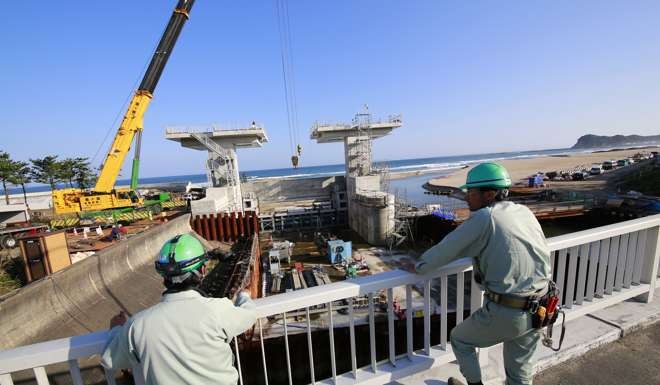
Lessons from Japan’s 2011 tsunami help save lives in latest earthquake
Now, we basically just tell people to stay away from the sea, to head to the highest possible ground
But on the day now known as “3/11,” some of these failed due to power outages after the huge magnitude 9.0 quake, while many firefighters were killed when the waves – 30 metres high in places – rushed ashore.
“A lot of people told us they weren’t able to hear any of the broadcasts, the waves were bigger than expected, and many went back after the first one to check things out,” said Tsunetaka Omine, a disaster official in Iwaki, a city where around 460 residents died in 2011.
Iwaki now blasts warnings to every mobile phone in the area, sends email messages and broadcasts on local radio in addition to the older methods. Previous elaborate systems designating specific evacuation centres have also been abandoned along the coast in many cases as too complicated. Some designated areas were too low and became death traps where scores seeking safety drowned.
“Now, we basically just tell people to stay away from the sea, to head to the highest possible ground,” Omine said.

As a result, as sirens wailed shortly after dawn on Tuesday, ships headed out of harbours to deeper water and lines of cars snaked up nearby hills. Public broadcaster NHK, always a key player in disaster prevention, revamped its broadcasts after 2011 in response to criticism that it had been too calm in its reporting, leading some to take warnings less seriously.
So on Tuesday, announcers abandoned their usual careful modulation for an unsettling note of urgency, repeatedly telling listeners, “Do not go near the water, a tsunami is coming!” as messages flashed on the screen in red saying “Tsunami! Run!”.
And in a nod to a growing number of foreign residents, a dubbed version of the NHK channel broadcast warnings in English, Chinese and Korean.

Several young foreign English teachers died in 2011, prompting speculation they had not known of the danger. Kathy Krauth, a teacher with a Tokyo international school leading a dozen students on a study tour, was staying at a traditional Japanese inn in the coastal town of Ofunato and was evacuated to higher ground soon after the quake struck.
Four hours later, the group was finally allowed back to their inn - and were promptly relocated to a hotel at a higher, safer elevation. “I felt like the lessons of 3/11 were really taken to heart,” Krauth said. “The feeling was, we just don’t know, but we’re going to be as cautious as we can.”


